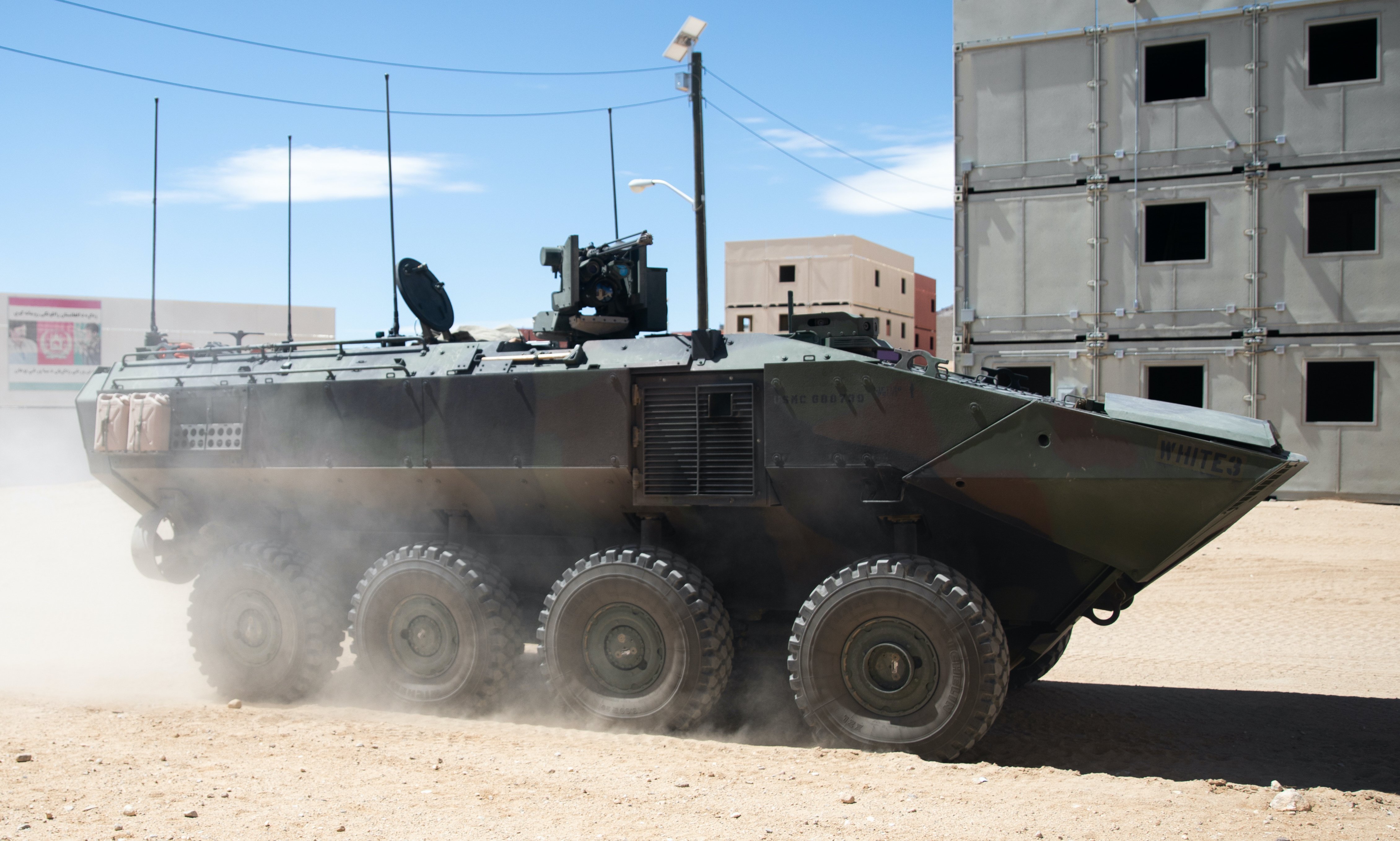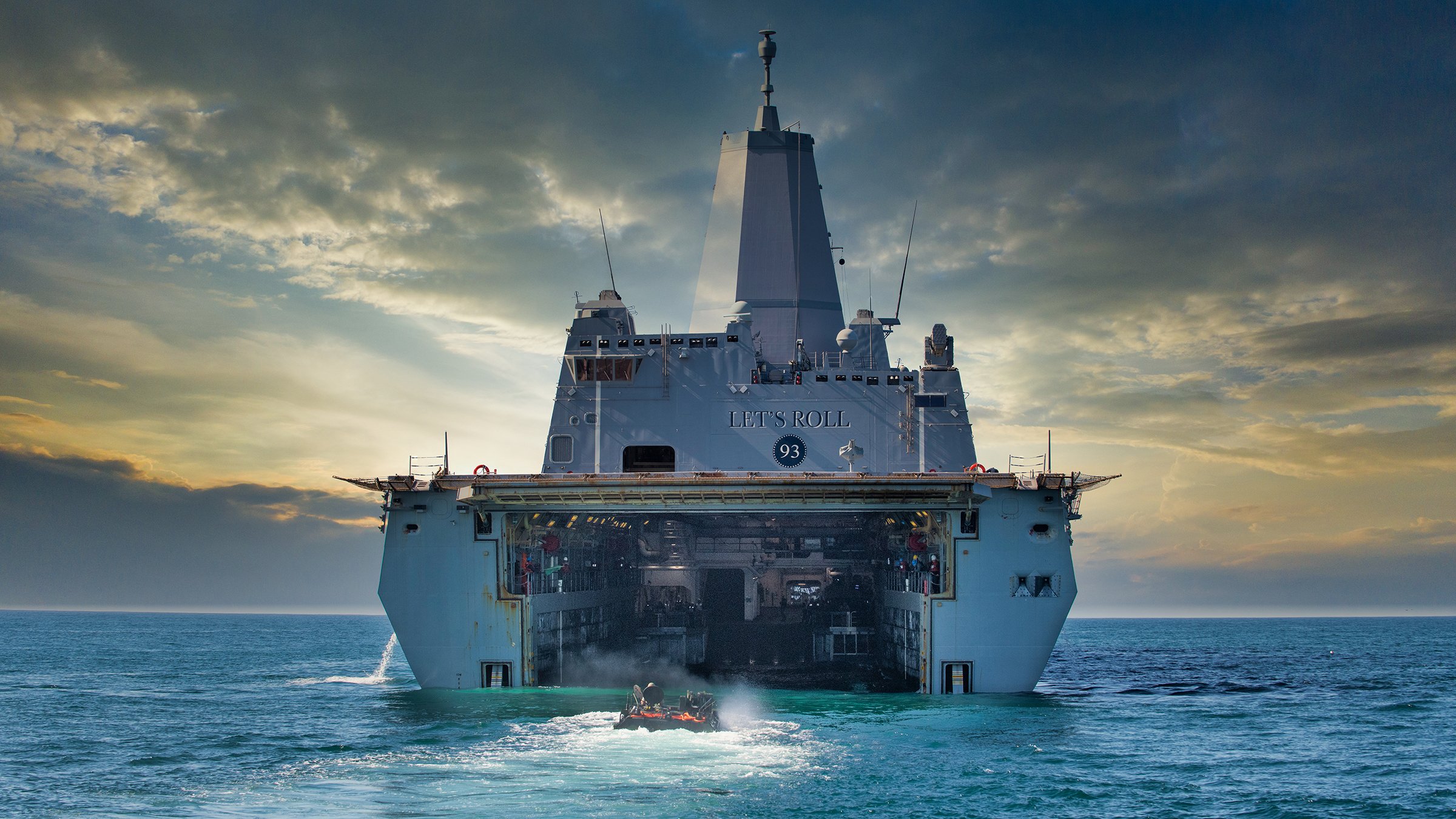
The amphibious combat vehicle’s open architecture design is already allowing builder BAE Systems to experiment with adding in new combat capabilities, even as the company continues to ponder potential variants it could offer down the road.
For the time being, the Marine Corps has asked BAE Systems to build about 700 ACVs to replace the aging amphibious assault vehicles: 33 would be a command and control variant, 34 would be a recovery variant, 175 would have an unmanned turret with a 30mm cannon, and the rest would be the basic personnel carrier variant, John Swift, BAE’s amphibious vehicles program director, said today at the Defence IQ Future Amphibious Forces event.
Though other future variants are being discussed – Swift said swapping out the cannon for a rocket or missile launcher has been proven to be a “feasible and supportable” payload option – another BAE Systems official said the company is also looking at new capabilities to add to the existing vehicles.
Ray Coia, director of business development for amphibious and Marine Corps programs, said in a separate industry panel at the same conference that, just last week, BAE Systems and the Marine Corps conducted a demonstration with a battle management system installed in a handful of ACVs at Camp Pendleton, Calif.
Coia said the demonstration involved a couple of ACVs that were already fielded to units at Camp Pendleton, which were modified to include the battle management system, as well as a BAE Systems vehicle serving as a technology demonstrator.
“It was a very quick, seamless, low-cost option to provide a capability that didn’t exist previously,” he said, which is only possible because the Marines prioritized an open architecture system upfront, to allow for plug-and-play capabilities later on.
“Last week we threw a lot of information at very young Marines, corporal and below, and it’s amazing their ability to assimilate and manage large volumes of data,” he said during the panel discussion.
The next generation of Marines “is well attuned to this environment. Either it’s growing up with computers or computer games, et cetera – they are adept at managing information much better than, say, people of my generation.”

Coia said they not only quickly picked up the new capability, “they took over the demonstration and actually were the ones explaining it to the commanding general out there because they see the battlefield, they can see this dearth of information and make sense of it very quickly. So there should not be a fear that we’re going to overload these warriors with information; I think they can handle it, and they’ll learn how to manage it. I think the bigger problem for us is going to be making sure we have the pipes to push them the information, and they have the ability to push the information back and forth.”
To that end, Coia, when asked where he would want to put research and development dollars if more were available, said he’d like to see more investments in sensor technology and secure networks. Both will be key to collecting and passing information ahead of and during engagements with an enemy, he said.
Nazario Bianchini, the sales director for Italy and the U.S. at Iveco Defence Vehicles, said during the industry panel that he would like to see more investments into unmanned technologies. Iveco’s SUPERAV design for the Italian Marines is the basis of BAE’s ACV design. BAE is responsible for manufacturing the ACV vehicles in the United States, while Iveco remains a key component supplier and the design authority.
“I believe that the future is the unmanned technology, unmanned systems,” Bianchini said.
If investing in armored vehicles is about saving lives on the battlefield, then he said there’s no better way to save lives than to reduce the numbers of humans actually on the battlefield. Bianchini outlined a future scenario where a platoon of 10 or 20 vehicles swam from a ship to the beach, but only one of those was manned. The other unmanned vehicles, he said, could follow the leader across the beach to their objective, bringing with them “combat services” like the 30mm cannon to fire as needed along the way.
“In this way, you reduce drastically the people involved, and you save people by the design of the structure of the force arriving on the beach,” he said.
“So if I had a bag of money to put somewhere, it would be unmanned systems. It would be electronic war and countermeasures to attack their system, the enemy system, or robotics to go where for humans it’s difficult to go.”
Swift, during his remarks, said that BAE Systems had fielded two platoons of vehicles and that a third, with 3rd Assault Amphibian Battalion at Camp Pendleton, would be fielded next month. In total, about 80 vehicles are in some stage of delivery. After a first full-rate production contract was awarded in December for 36 vehicles, Swift said 204 have now been put on contract and that the remaining 500 should be put on contract “sometime late this year, early next year.”





